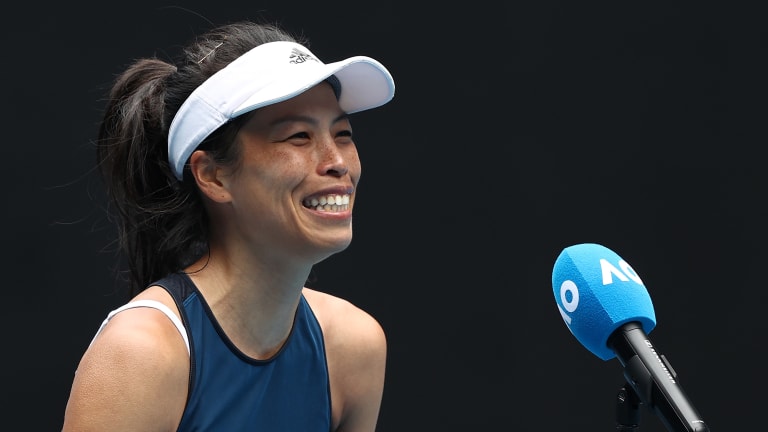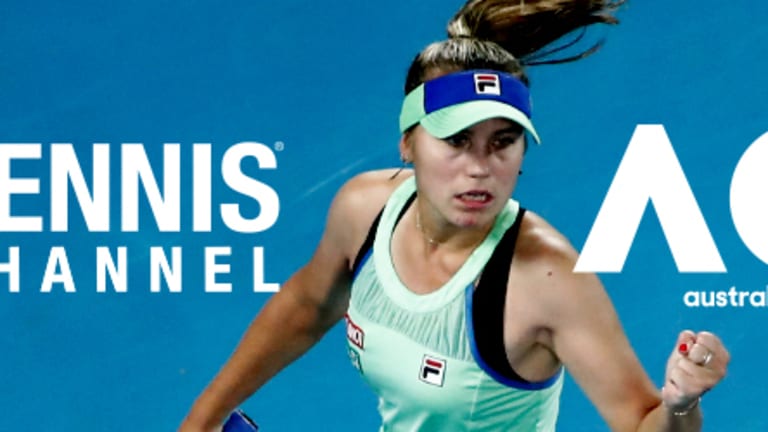Major Takeaway: Hsieh destroys usual preconceptions of pro players
By Feb 15, 20212025 Australian Open Takeaways
Women's doubles is a must-see experience for tennis fans worldwide
By Feb 02, 2025Australian Open
Taylor Townsend and Katerina Siniakova win second women's doubles major together at the Australian Open
By Jan 26, 2025WTA Finals
The dazzling doubles genius of Hsieh Su-Wei: “She’s amazingly creative”
By Oct 30, 2024Wimbledon
Hsieh Su-Wei, Jan Zielinski win mixed doubles title at Wimbledon
By Jul 15, 2024Sunshine Swing in Review
The WTA's Sunshine Swing proved that slight shifts can bring results, and that opportunity still knocks
By Apr 01, 2024Australian Open
The doubles mastery, and radical fun, of Hsieh Su-Wei
By Jan 29, 2024Quote of the Day
'Curse-breaker' Hsieh Su-wei helps Jan Zielinski make Polish history in Australian Open mixed doubles
By Jan 26, 2024US Open
US Open: Hsieh Su-Wei now 16-0 in 2023 majors after Gauff-Pegula win with Wang Xinyu
By Sep 06, 2023Wimbledon
Hsieh Su-Wei and Barbora Strycova win second women's doubles title together at Wimbledon
By Jul 16, 2023Major Takeaway: Hsieh destroys usual preconceptions of pro players
The Taiwanese player goes years without stringing her racquets and if she isn’t “feeling it,” her practices might last two or three shots.
Published Feb 15, 2021
Advertising

Major Takeaway: Hsieh destroys usual preconceptions of pro players
© Getty Images
Advertising

Major Takeaway: Hsieh destroys usual preconceptions of pro players